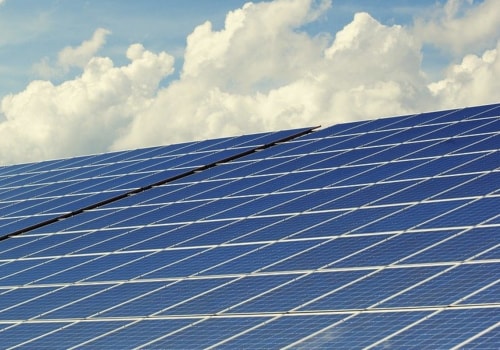Sunlight is the sun's radiant energy. The amount of solar radiation, or solar energy, that the Earth receives each day is many times greater than the total amount of all the energy that people consume every day. However, on the Earth's surface, solar energy is a variable and intermittent source of energy.
Solar energy
is created by nuclear fusion that takes place in the sun.It is necessary for life on Earth and can be harvested for human uses, such as electricity.
solar energy
is the energy of the sun that is converted into thermal or electrical energy. Solar energy is the cleanest and most abundant source of renewable energy available, and the U.S. UU.It has some of the richest solar resources in the world. Solar technologies can harness this energy for a variety of uses, including generating electricity, providing light or a comfortable indoor environment, and heating water for domestic, commercial, or industrial use. Read on to go a little deeper into the use of solar energy around the world. China leads the way for installed photovoltaics, with the United States and Japan in second and third place in terms of installed solar capacity, respectively.
Solar radiation produced by the sun's energy is abundant all over the world, but some places are more suitable for photovoltaic solar panels than others. For example, it makes more sense to use the sun's energy in places where the sun shines all year round, such as in deserts. Where there is more sun, there is greater potential to add solar technologies within the utility energy mix. Some of the countries with the most sunlight are on the list of the top 10 solar capacity systems, such as Australia and India, but there is certainly untapped potential in Africa and South America.
Many of the countries in the world that have the highest per capita amount of solar energy installed do not necessarily have high levels of solar insolation. Government and State Incentives Play an Important Role in Making Solar Energy Affordable. For Solar to Succeed, Governments Must Support the Energy Industry's Shift to Renewables. A good example of this is the state of New Jersey.
Not the sunniest state in the U.S. In recent years, Chinese solar panel capacity has increased exponentially. It has become the largest solar market in the world and it is estimated that by 2024, China will have 370 GW of installed solar energy, twice as much as the U.S. While this growth is impressive and admirable, China will need to continue to ease its dependence on coal-fired power generation to be seen as a true leader in renewable energy.
Europe has been encouraging the growth of renewables for years and plans to boost renewables to improve its post-COVID-19 economic recovery. In addition, Germany, Italy, the United Kingdom and France are currently at the top in terms of solar or agrivoltaic park capacity. To reduce CO2 emissions, European Union countries plan to extract most of their electricity from renewable energy by 2050, with solar energy as the main source of energy. In addition to the federal solar tax credit, individual states offer local incentives to install residential solar systems.
They are also beginning to adopt solar energy for its low-cost energy production and job creation, and are starting to incorporate solar power plants into their energy mix. California remains at the forefront of the growth of solar photovoltaic systems in the U.S. And it's one of the best states to install solar energy. But now, other states are catching up, including Texas, Utah, Florida, New York, Massachusetts and Rhode Island.
It is projected that by 2024 there will be an average of 1 solar installation per minute in the U.S. Looking at the map above, it's no surprise that many areas near the equator have relatively higher photovoltaic potential given the amount of sunlight they receive throughout the year, the sun's high angle, and the lack of snow and ice to reflect solar radiation back into space. Solar energy can help reduce the cost of electricity, contribute to a resilient power grid, create jobs and drive economic growth, generate backup power for nighttime and outages when combined with storage, and operate with similar efficiency on both small and large scale. Solar cookers offer an excellent alternative to cooking with wood stoves, on which 2 billion people still depend.
It is based on insolation in different parts of the Earth's surface, which is a measure of the amount of solar radiation reaching an area. Many satellites, including the International Space Station, have wide, reflective “wings” of solar panels. Solar ArchitectureThroughout the day, solar energy is part of the process of thermal convection, or the movement of heat from a warmer space to a colder one. Solar energy and peopleSince sunlight only shines for about half of the day in most parts of the world, solar energy technologies must include methods to store energy during dark hours.
PhotovoltaicPhotovoltaics is a form of active solar technology that was discovered in 1839 by 19-year-old French physicist Alexandre-Edmond Becquerel. All of these applications rely on supportive policy frameworks at the local, state and federal levels to ensure that consumers and businesses have fair access to clean energy technologies, such as solar energy. Although the government often offers reduced taxes to individuals and businesses that use solar energy, and technology can eliminate electricity bills, the initial cost is too high for many to consider. Solar panels can generate electricity almost anywhere on Earth, but some areas receive more sunlight than others and, as such, have greater solar energy potential.
. .







